The incomparable Nadar: Master photographer, political cartoonist and balloonist of 19th-century Paris
posted Friday, March 22, 2013 at 2:00 PM EST

"In photography, like in all things, there are people who can see and others who cannot even look." -- Nadar
He was born Gaspard Félix Tournachon in 1820, and grew up in Paris. He first became known for his biting and sarcastic political cartoons which earned him the nickname "tourne à dard"-- the one who stings or twists the dart. He liked that so much he shortened it to "n à dard" and finally to "Nadar." He kept the name when he opened his portrait photo studio, which by the middle of the 19th century was perhaps the most successful photo business in the world.
Yet even as a photographer he retained his cynic's voice. Nadar is quoted as saying:"Photography is a marvelous discovery, a science that has attracted the greatest intellects, an art that excites the most astute minds -- and one that can be practiced by any imbecile."
From political cartoonist to studio photographer
Nadar was very successful as a political cartoonist and when, in 1851, his banker encouraged him to cash in on the new photography craze, he thought about opening a photo studio. The wet-plate collodion negative process had just been invented and it revolutionized the portrait studio business. From a collodion glass-plate negative any number of prints could be made, unlike the one-print Daguerreotype. For that reason, the collodion process rapidly replaced Daguerreotypes since studio clients could now buy dozens of portrait prints for their family, friends and business acquaintances.
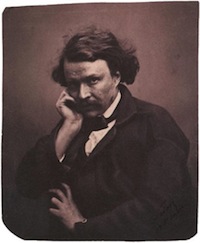

Portrait of Nadar (left, circa 1856), and a creative studio shot of he and his wife riding in a (faux) balloon (right, circa 1870).
But Nadar was unwilling to leave his successful cartooning career. Still, he did install a darkroom in his Paris apartment and began to photograph friends. He eventually convinced his younger brother Adrien to run a photo studio for him. Unfortunately, Adrien turned out to be a mediocre photographer and a lousy businessman. The studio floundered. In 1854, Nadar loaned his brother all of his savings -- some 6,000 francs -- which Adrien promptly lost. Finally, Nadar took over the studio and within a few months turned it around and made it a huge success.
"Photographic theory can be taught in an hour, the basic technique in a day. But, what cannot be taught is the feeling for light. . . . It is how light lies on the face that you as artist must capture." -- Nadar
A master at portraiture...
At the heart of Nadar's portraiture was his intuitive grasp of natural light and his skill at posing his subjects. He had learned a host of posing tricks from painter friends and he applied them to his photography. He would position his subjects in three-quarter views, hide their hands to emphasize their faces, and encourage them to find their own poses. Unlike other portrait photographers at the time, he rarely used props and he side lit his sitters to model their faces. He also controlled the quality of the light through the use of reflectors, screens, mirrors and even veils.
However, most importantly, he focused on his sitter's gestures and glances and never tried to make "flattering" images of them.
"To produce an intimate likeness rather than a banal portrait, the result of mere chance, you must put yourself at once in communion with the sitter, size up his thoughts and his very character," Nadar said about his craft.
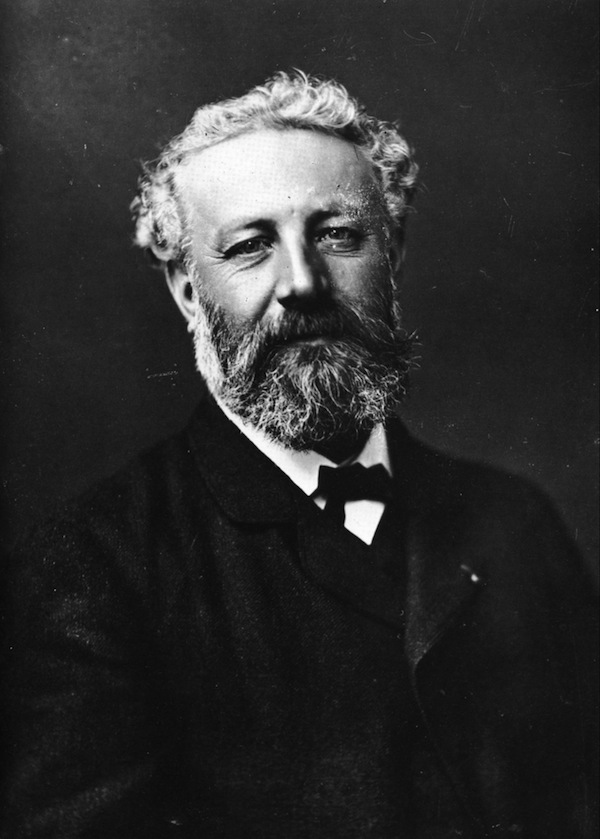
Portrait of Jules Verne by Nadar
...and a master of self promotion
In 1860, Nadar moved his photography studio and his home into a phenomenally expensive atelier (workshop). Renovations cost him another fortune, but Nadar was a cunning Mad Man of his day. To make sure that everyone in Paris knew he had a new studio, he had his scrawled signature reproduced in huge letters across the atelier's enormous glass façade.
With this stroke of advertising genius, Nadar became a household brand and his photography studio the place for the wealthy and famous to be photographed. The atelier also became a gathering place for celebrities and the powerful. His elaborate dinners were known for attracting the likes of everyone from writers Gustave Flaubert and Alexander Dumas to the actress Sarah Bernhardt.
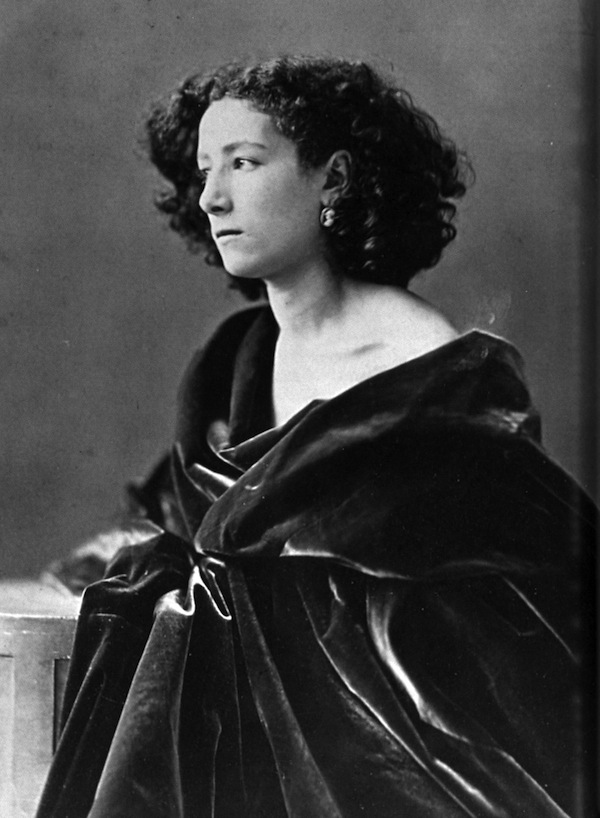
Portrait of the actress Sarah Bernhardt by Nadar
And at the center of it all was Nadar. So when he said that, "the portrait I do the best is of the person I know the best," he meant almost everyone of importance he photographed.
His intimacy with his sitters comes across in photographs such that of his friend the French novelist and feminist, George Sand. She was Paris' most outrageous personality, shocking society by wearing trousers and smoking cigars and most scandalously, taking lovers like a man. In her portrait, Nadar captured her strong will and her nonconformity, but still managed to show the warmth he felt towards her.
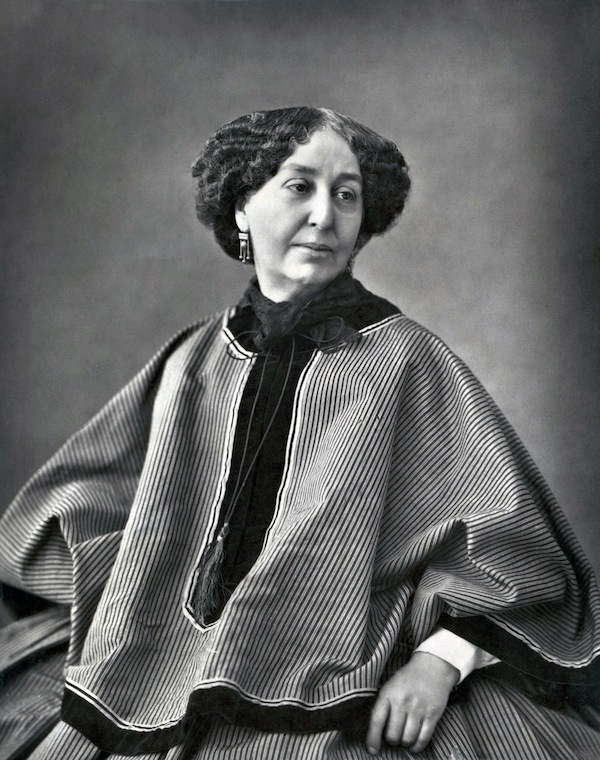
Portrait of author George Sand by Nadar
A ballooning interest
Like so many of the amazing photographers the 19th century, Nadar was a polymath who delved into a wide range of interests. He had a passion for ballooning at a time when few people had ever heard of these high-flying contraptions. Imagine how astonishing it must have been for the strollers along the Seine, when one day in 1858, they came upon a man in a grassy park, filling up a gas balloon.
Some recognized him as Nadar, but they must have all been fascinated as he filled the balloon's wicker gondola with collodion wet-plates and his large wooden camera. Then he climbed into the basket, signaled his ground crew to loosen the lines, and gently rose into the air over the heads of the delighted crowd. Aiming his camera down at the city and river he took some of the world's first aerial photographs.
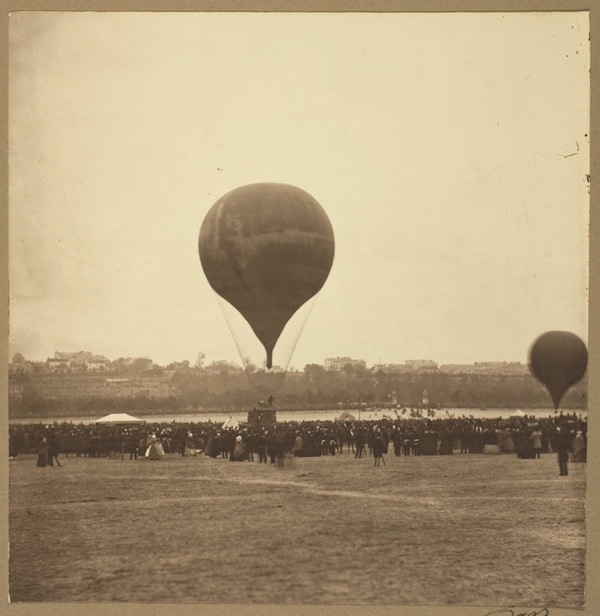
Nadar's 21,000-cubic-foot "Le Geant"
Hooked on balloons, he set about in 1863 to build a huge one called "Le Geant" (the Giant). It had a volume of nearly 212,000 cubic feet (6000 m³) and it inspired one of Nadar's pals, Jules Verne, to write the novel "Five Weeks in a Balloon." Verne also wrote Nadar into one of his stories as the character Michael Ardan in his novel "From the Earth to the Moon."
Convinced that the future of flight belonged to heavier-than-air machines, Nadar and Verne created "The Society for the Encouragement of Aerial Locomotion by Means of Heavier Than Air Machines" with Nadar as president and Verne as secretary.
A long life of invention and an enduring legacy
Nadar was also an inventor and in 1861 took out a patent for artificial photographic lights. To prove the utility of his invention, Nadar took his lights -- powered by Bunsen cell batteries -- and his cameras into the sewers and catacombs of Paris. He produced two volumes of photographs from his underground adventures.
The cartoonist, photographer, balloonist and inventor died in 1910 at the age of 89, having lived long enough to see his dream of heavier-than-air machines -- airplanes -- come true and it was in this year that Paris hosted the world's first conference on air traffic control.
Today, Nadar's name lives on in photography through the Prix Nadar which is awarded annually to the best photography book edited in France. Since the 1950s, the award has gone to photographers such as William Klein, André Kertész, Richard Avedon, Irving Penn and Gina Lollobrigida.
Below is a video look at dozens of Nadar's portraits in the Masters of Photography series.